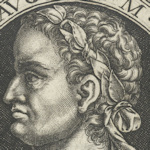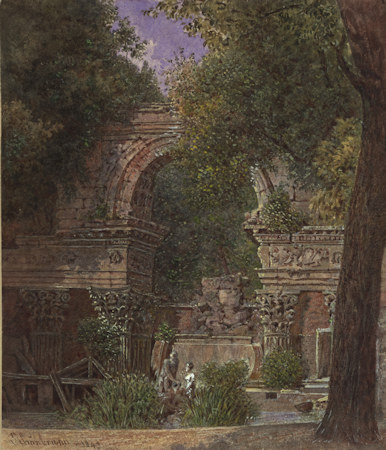
One thing you probably don’t expect to find in the grounds of a Baroque palace are some Roman ruins. Unless that palace is Vienna’s Schönbrunn…
- Fake (but impressive) ruins built in 1778
- Mimics the Temple of Vespasian and Titus
- Accessible to the public for free as part of the park area
- See also:
Roman ruins in Austria?

(© Schloß Schönbrunn Kultur- und Betriebsges.m.b.H., Photo: Alexander Eugen Koller)
What a fabulous find, not to say coincidence, that such a remarkable ancient ruin should remain preserved in the very grounds of the Habsburg palace!
It’s almost too good to be true.
Take a closer look, though, and the materials that make up the broken statues, frescoes and arches of this Roman temple seem a little newer than they ought to be. The whole collection is fake, albeit a rather convincing one.
Not that the original architect was trying to kid anyone.

(Watercolour of the ruins from 1843, painted by Franz Alt; Wien Museum Inv.-Nr. 105861; excerpt reproduced under the terms of the CC BY 4.0 license; photo by the Wien Museum)
Aristocrats and rich merchants in Europe often constructed artificial Roman ruins on their grounds in the fashion of the time. Similar ruins exist, for example, at Villa Torlonia in Rome or in Parc Monceau in Paris.
Schönbrunn’s little piece of Rome went up in 1778, built for the Empress Maria Theresa by the same architect who designed the park’s Gloriette: Johann Ferdinand Hetzendorf von Hohenberg.
The ruins make a remarkable impression for what is, essentially, a garden ornament: the imperial baroque equivalent of a gnome with a fishing rod. Step a little away from it, for example, and the central arch frames a statue up the hill behind it.
(Find tickets and experience options for the palace and zoo)
The design mimics the actual ruins of the Temple of Vespasian and Titus, as drawn by Giovanni Battista Piranesi in the mid-1700s.
The Roman Emperor Titus built the original (real) temple for his father, Emperor Vespasian, in the 1st century AD.
Titus died before completion of the building, though his brother — and successor as Emperor — Domitian finished the task, dedicating it to both his predecessors (hence the name).
Vespasian, incidentally, is known for his deathbed quote, “Woe is me. I think I am becoming a god” and is also allegedly the source of such delicate lines as, “the body of a dead enemy always smells sweet.”

(Temple of Vespasian and Titus by Giovanni Battista Piranesi, 1756; used as a model for Schönbrunn’s Roman ruins. Photo courtesy of the Metropolitan Museum of Art)
To be fair, it’s perfectly realistic to imagine Roman ruins in Vienna.
Excavations in the city have revealed, for example, that Vindobona (as Roman Vienna was known) housed as many as 30,000 people in its military garrison, military settlement and civil town. Emperor Marcus Aurelius (of Gladiator fame) even spent time here in the 2nd century.
How to get to the Roman Ruins
If you’re in the palace gardens at Schönbrunn, stand at the foot of the huge Neptune Fountain below the hill crowned magnificently by the Gloriette.
Look left and walk along the level path until you reach the Roman ruins on your right among the trees.
Continue past the ruins to reach the Obelisk with its Egyptian hieroglyphics (another fake).